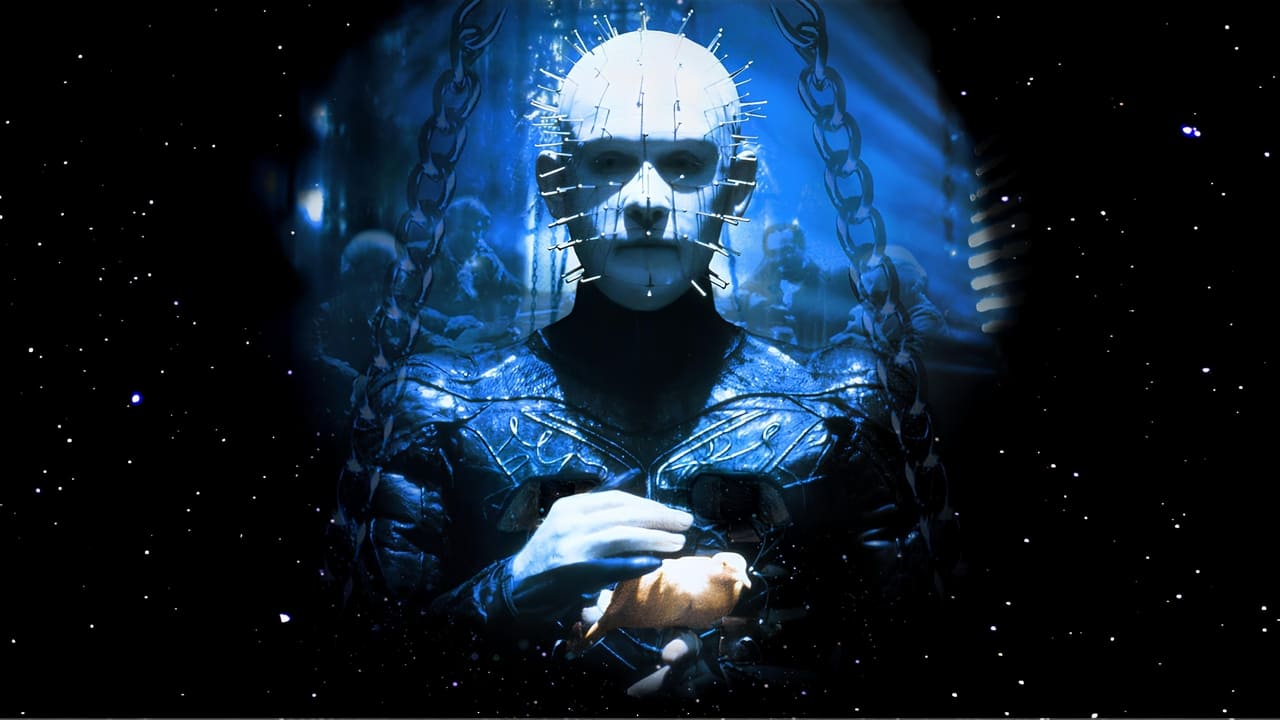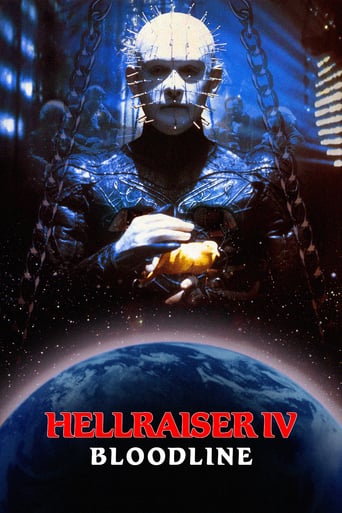

Wow, this is a REALLY bad movie!
... View MoreOne of the most extraordinary films you will see this year. Take that as you want.
... View MoreClose shines in drama with strong language, adult themes.
... View MoreWorth seeing just to witness how winsome it is.
... View MoreEven if you haven't experienced it, I'm sure you can imagine a feeling when you assemble a powerful computer from high-quality components, plug it into power, press the button and ... it does not work. All parts seem to be in place and you have no idea what the problem is. Such an aftertaste this movie left on me. The story is great, perhaps the best so far, but the film wasn't interesting to me. Technically, I have no complaints, everything is well done, but it does not achieve the effect. For some reason, the film simply does not have the strength characteristic of Barker. It's worth seeing for the sake of continuity of the franchise and that's all.5,5/10
... View MoreImagine a trilogy: the first taking place in 18th century France where a toy maker L'Merchant builds the puzzle box for an eccentric rich aristocrat who uses it to summon a demon Angelique. The second movie taking place directly after Hellraiser III where the building we see in the end is the setting of a sort of Ghostbusters copy where the building is architected to summon demons and the the ancestor of L'Merchant lives there with his family. During this time he also building toys and trying to complete L'Merchant's work in building the device that will destroy hell. The third movie is the futuristic space ending where a space station serves as the device that L'Merchant designed to destroy hell and where another ancestor of L'Merchant builds and hijacks it in order to fulfill his family's destiny and destroy Pinhead and the Cenobites once and for all. It's a bold movie and a bold idea and it was all headed by Clive Barker who conceived of the idea and sold it to Miramax. But that's not what this movie is. This movie is the condensed, short short version of all three ideas into one unintelligible, incoherent, cropped, cutted, mish-mosh of a mess that is called Hellraiser Bloodlines. This could have been great. This could have been one of the best of the series, but it was not to be. Instead we have to piece together what could have been and hang our heads in the atrocity we have been given. Even Hellraiser V is better than this. Even Hellraiser III was better than this (well more interesting that is). It's no wonder the original directory removed his name from the credits.If you liked this movie, great. But you have to admit, there was no screenplay here. There is no story here (there was supposed to be) and there was no way to understand what is really happening if you only have 1 hour and 20 minutes to explain a movie that takes place in three different time periods containing three different stories, all with different characters. This should have just been the middle part of the movie. It would have been mediocre, but it would have been a mediocre sequel much like II and III were. IV isn't god awful, it's just a mangled mess and you can tell.
... View MoreFollowing the ludicrous but profitable Hellraiser III, Clive Barker and Pete Atkins sought to restore some dignity to the series, and from their brainstorming sessions emerged one of the franchise's finest screenplays. Barker suggested that Atkins write a family saga set during three eras, and Atkins one-upped him by focusing on three generations of the damned LeMarchand family. On paper it is one of the few truly epic horror films, following three generations of the family that crafted the Lament Configuration, and their centuries long quest to atone for the hell that they've unleashed. Make-up effects artists Kevin Yagher was tapped to direct, and his ambition matched that of Barker and Atkins; with this film they would create the ultimate ending to the saga of LeMarchand's box, and of its most famous demon, Pinhead. Unfortunately it was not to be. The production was not given nearly enough time or money to realize Atkin's story, and while Yagher did his best under the circumstances, his initial edit made the studio very nervous. Simply put, Pinhead was considered the series's cash cow, and he didn't appear in the movie until about 40 minutes in. Soon the film was taken out of Yagher's hands; its linear story was rearranged so that Pinhead appeared in the first act, and several scenes were added or re-shot by an uncredited Joe Chappelle to make sense of the severely truncated mess that Miramax now had on its hands. As the film no longer bore any resemblance to his original conception, Yagher chose to be credited as "Alan Smithee." The final product, though entertaining, is thus an extremely frustrating experience for any die-hard fans of Hellraiser.An interesting wrinkle emerged about ten years after the fact, when a very rough VHS copy of a work-print was leaked onto the internet. Though the film had already been heavily compromised by this point in its production, and (as work-prints tend to do) it features several unfinished special effects, the work-print does feature several scenes which were cut from the theatrical version. A couple fan-edits followed, both of which sought to combine both the theatrical release and the work-print into something more closely resembling the original screenplay. Having already seen the theatrical version a few times, I chose to watch one of these fan composites and compare it to Pete Atkin's script. The version I watched disingenuously refers to itself as a director's cut, but it still features some of the material shot by Chappelle, and several significant gaps remain in the story. Because some important scenes were either never filmed or have never surfaced, several aspects of the first act (set in 17th century France) are actually more confusing here than they are in the theatrical version. By arranging the story chronologically, however, the three generations of LeMarchands (each convincingly played by Bruce Ramsay) can now be appreciated as different progressions of a single character. While this pseudo-director's cut still isn't the lost masterpiece that fans are craving, it did increase my admiration for what the filmmakers were trying to achieve. The idea of an old-fashioned Hell (personified by Valentina Varga as Hell's sultry princess, Angelique) in conflict with the more ordered Hell of Pinhead is rich with possibilities, and it clearly struck a chord with Clive Barker. Though Barker repeatedly disavowed the Hellraiser sequels, he returned to this theme in The Scarlet Gospels (his literary finale to the Hellraiser mythos), and several other images are quoted almost verbatim from Atkin's screenplay - I was particularly struck by how both authors characterized Pinhead's chains as snakes coiled to strike. And even in its abortive form, the film still displays a confident visual sense from first-time director Yagher. Even the film's weakest segment (in which the modern John Merchant's family is held hostage by Pinhead) still features some spectacularly creepy visual flourishes. As the credits roll on either version, one is thus left pining for the movie that could have been. It wouldn't be too much of an exaggeration, I think, to call this film Hellraiser's own Magnificent Ambersons in terms of ambition and compromise.I would be remiss not to mention the film's most controversial section, in which Pinhead and Dr. Paul Merchant match wits aboard a futuristic space station. Outer space is usually regarded as the location in which any horror franchise loses its dignity. While the idea might seem inherently campy, I think the meeting of Hell with the cold void of outer space is inspired. What lets it down here is some lackluster CGI and some annoying concessions to the genre (e.g. characters splitting up to die slasher movie deaths, lame chase sequences, etc.) This potential would be better realized in the Hellraiser-inspired Event Horizon, which is freed from these potential pitfalls, I think, by being a standalone movie. Without the baggage of an iconic boogeyman like Pinhead, it's free to focus more on psychological horror and character development, and thus it sadly plays like a better Hellraiser-in-Space than the real one.Gutted though it may have been, Hellraiser IV proved profitable enough at the box office to pave the way for a seemingly never-ending series of DTV sequels, starting with the still contentious Hellraiser: Inferno.
... View MoreRemener Jason Voorhees going to space, people hated that, it was 2001. But 5 years earlier Kevin Yagher had to direct pinhead in space, the most hated entry in the franchise were Doug Bradley plays pinhead.The story takes place in 3 era's, the important one is in space and they are all connected due a bloodline. So we follow a girl that has walked among humans for ages. It's only in space that she's a cenobite. The story itself isn't really that strong. The history of the toymaker, the creator of the box, isn't that interesting but it's the gore added that makes it worth seeing. Weere as in part 3 the cenobites looked a bit funny and stuff was sometimes done with morphing here the cenobites do look like fine. The creation of the twins is really well done. It's not all that bad, it's just a weak story but as i said earlier, once pinhead comes in it do works out fine. Gore 1,5/5 Nudity 0,5/5 Effects 2,5/5 Story 2/5 Comedy 0/5
... View More